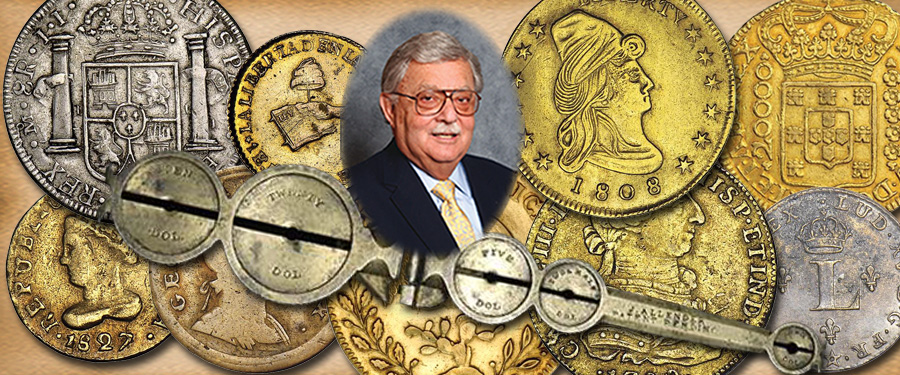
Counterfeiting happened all over the world after the Second World War. Gold coins were collected here in the United States, even after the Gold Acts of 1933 and 1934 called in gold coins in this country. However, collectible gold coins were exempt from confiscation by federal authorities. So to gather a "store of wealth," of gold, many became collectors. Since the supply was small here in the United States people looked elsewhere in the world for gold coins. Many were found in overseas vaults, and collections, where restrictions on ownership were not in place or were not enforced. But as the demand grew in the United States, the value of many of these gold coins went up along with the demand. Thus, it became worthwhile for counterfeiters to make false coins, which looked like federal issues but were not made in an official mint.
Some of these counterfeits were easily recognized by enforcement agents — in the United States the Secret Service. Others were more skillfully made and were even deceptive to federal agents. And as the prices of collectible gold coins went up, the public was being ‘ripped off" while the counterfeiters were making even more money.
Let me mention two denominations that were flooding the country. One was the gold dollar, struck from 1849 to 1854. It was a small coin with a nice design, easily recognized by enthusiasts, including by families from Caribbean countries. They loved these gold dollars and gave them as gifts, often to newlyweds for luck — each gift was customarily 13 coins. Assembling groups of 13 at a time put a strain on the supply and the price of the coins rose from face value to as much as 20 to 30 times that amount. The small size made the coins easy to counterfeit. Money could be made by recreating the coins in gold, and selling them at many times the intrinsic value! As the practice continued, lower-carat gold was used, making the deception even more lucrative.
The same deception occurred with Liberty Head $2.50 coins, struck by United States mints from 1840 to 1907. These were the favorites of many people who came to the United States, especially from Asia. In the West, when railroads were being built, many thousands of people came to America for jobs, and worked here as we built our way across the country. The gold quarter eagle design and size became familiar (as it was the only one that might be recognized from circulation) and popular to accumulate. This tradition continued for many, many years, and was evident in America even into the late 1970s. When the price of gold went up, the coins became more desired and harder to acquire. As with the gold dollars, counterfeiters used this as an opportunity to make large profits by fabricating these quarter eagles.
Similar situations of rising value and increased scarcity for different gold coins encouraged the manufacture of counterfeits, not only for United States coins, but also for other scarce coins struck throughout the entire world.
So these are examples of what the situation was after the Second World War and what brought about the flood of counterfeits and the attempts by the Government to prevent these false coins from entering the country and fooling American citizens. In upcoming articles, I will offer some personal recollections of how this counterfeiting and the government’s attempts to control it affected Stack’s Rare Coins.





